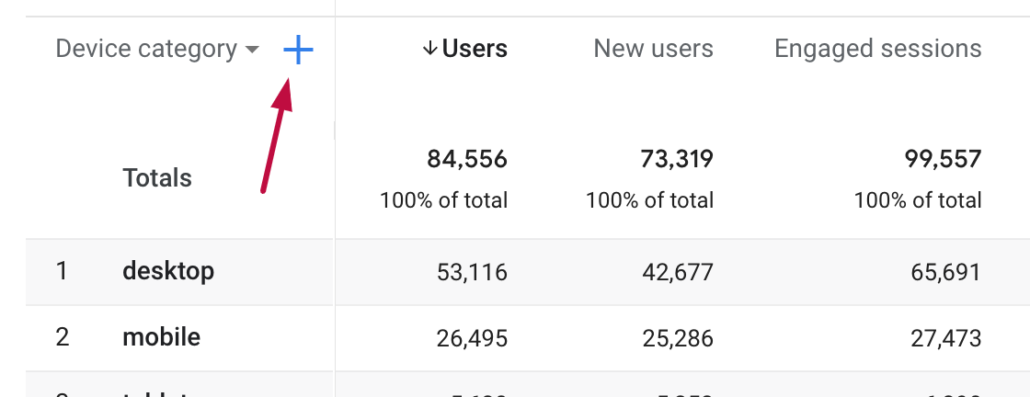Make The Most Of Coverage Accuracy With Secondary Measurement in Google Analytics
Understanding how to make best use of reporting precision with second dimensions in Google Analytics can considerably improve the deepness of insights acquired from data evaluation. By including secondary dimensions tactically, marketing professionals can uncover concealed patterns and correlations that may not be quickly obvious when examining main metrics alone. This nuanced technique makes it possible for an extra comprehensive understanding of individual habits and campaign efficiency, leading the means for even more targeted and effective decision-making. The use of secondary measurements holds the vital to opening a riches of beneficial details that can transform the effectiveness of electronic advertising and marketing approaches.
Comprehending Secondary Dimensions in Google Analytics
Additional measurements permit users to sector and better study data beyond the primary measurement picked. While the primary measurement might present the overall number of page sights, including an additional measurement such as 'source/medium' can give understandings right into where the traffic stemmed from.
Furthermore, comprehending secondary measurements is critical for producing extra customized reports tailored to certain organization goals. By picking the right combination of key and secondary dimensions, analysts can uncover patterns, patterns, and relationships that could or else stay hidden. This nuanced technique to data analysis encourages businesses to make enlightened choices based on a thorough understanding of user actions across different measurements.

Exactly How to Use Additional Dimensions
When leveraging secondary dimensions in Google Analytics, the sensible application entails selecting details information criteria to further refine understandings beyond the primary measurement's range. To use second measurements effectively, begin by accessing the report or dataset where you want to dig much deeper right into the information. Within Google Analytics, find the key dimension that you are currently analyzing. Once determined, click the dropdown menu labeled "Secondary Measurement." This activity will certainly expose a list of added criteria that can be included in your evaluation. Pick the additional dimension that lines up with your analytical objectives, such as 'Source/Medium,' 'Tool Classification,' or 'Location.' By selecting an additional dimension, you can acquire a lot more in-depth insights into user behavior, demographics, or purchase channels. Bear in mind that second dimensions assist supply context and granularity to your primary measurement information, allowing you to extract more purposeful and workable understandings from your Google Analytics records.
Leveraging Additional Measurements for Insights
Using secondary measurements in Google Analytics permits a more thorough analysis of data, using useful insights beyond the key dimension's scope. By leveraging additional dimensions, customers can dive deeper into the performance metrics of their internet site or application, uncovering covert patterns and trends that might not home be quickly apparent when only considering key measurements.
One trick advantage of using second dimensions is the capability to segment and filter information more specifically. This can help analysts and marketing experts better comprehend the actions of certain user segments, such as brand-new site visitors versus returning visitors, or traffic originating from different geographical locations.
Moreover, second dimensions enable individuals to compare and contrast different data points within the exact same report, providing an extra alternative sight of performance (Secondary Dimension in Google Analytics). Combining the key measurement of touchdown web pages with additional dimensions like demographics or tools can disclose which pages are most efficient in engaging users on different gadgets or from different demographic groups.
In significance, leveraging secondary dimensions in Google Analytics equips individuals to extract richer understandings from their information, resulting in even more informed decision-making and eventually, boosted efficiency.
Best Practices for Secondary Dimensions
When assessing information in Google Analytics, integrating second measurements successfully enhances the depth of understandings acquired from the main metrics. Selecting appropriate secondary dimensions assists in supplying context and a clearer understanding of the data being examined.
Additionally, it is recommended to limit the number of secondary dimensions utilized in a solitary additional info report to prevent overwhelming the analysis with also much info. Concentrating on a few key secondary dimensions each time can result in even more actionable and concentrated insights. In addition, take into consideration exploring with different combinations of second and primary dimensions to discover unique fads and patterns that may not be evident when looking at the data in isolation.
Advanced Evaluation Techniques With Second Dimensions
Discovering intricate data relationships via the calculated application of additional measurements can introduce nuanced understandings that boost the deepness of analysis in Google Analytics. By combining secondary dimensions with main information sets, sophisticated evaluation techniques can be used to extract valuable information.
In addition, additional measurements can improve the analysis of conversion paths by giving additional context. Recognizing the numerous touchpoints a user engages with before converting can be vital in enhancing the client trip - Secondary Dimension in Google Analytics. By utilizing secondary measurements to explore specifics such as traffic resources or gadgets utilized, marketing professionals can customize methods to target high-converting channels efficiently
Verdict

To improve data analysis and gain much deeper understandings right into individual habits, recognizing additional measurements in Google Analytics is critical - Secondary Dimension in Google Analytics. Secondary dimensions allow customers to section and even more study data past the main measurement selected. While the key measurement might show the total number of page views, adding a second measurement such as 'source/medium' can supply insights right into where the traffic stemmed from.When leveraging second measurements in Google Analytics, the functional application involves selecting details information specifications to further refine insights past the primary dimension's range. Remember that additional dimensions aid provide context and granularity to your main dimension data, allowing you to draw out more meaningful and actionable insights from your Google Analytics records
Comments on “Step-by-Step Guide: Leveraging Secondary Dimension in Google Analytics”